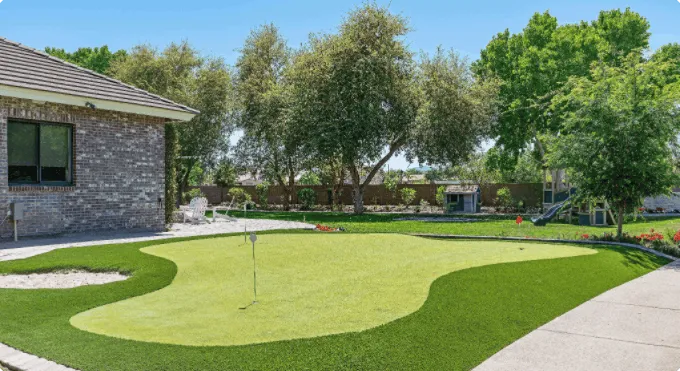
- Afrikaans
- Arabic
- Belarusian
- Bengali
- Czech
- Danish
- Dutch
- English
- Esperanto
- Estonian
- Finnish
- French
- German
- Greek
- Hindi
- Hungarian
- Icelandic
- Indonesian
- irish
- Italian
- Japanese
- kazakh
- Rwandese
- Korean
- Kyrgyz
- Lao
- Latin
- Latvian
- Malay
- Mongolian
- Myanmar
- Norwegian
- Persian
- Polish
- Portuguese
- Romanian
- Russian
- Serbian
- Spanish
- Swedish
- Tagalog
- Tajik
- Thai
- Turkish
- Turkmen
- Ukrainian
- Urdu
- Uighur
- Uzbek
- Vietnamese
Benefits of Using Artificial Soccer Turf for Modern Sports Facilities
Oct . 21, 2024 09:04 Back to list
The Evolution and Benefits of Artificial Soccer Turf
Soccer, known as football in many parts of the world, is a beloved sport that requires a quality playing surface to ensure optimal performance and safety for players. Over the years, the traditional grass soccer fields have faced challenges due to weather conditions, maintenance costs, and wear from frequent use. Enter artificial soccer turf—an innovative solution that is revolutionizing the way the game is played.
Artificial turf, often referred to as synthetic turf or simply turf, has come a long way since its inception in the 1960s. Early versions were criticized for being hard and lacking the natural feel of grass. However, advancements in technology and materials have resulted in a modern turf that closely mimics the look, feel, and performance of natural grass. Today’s artificial soccer fields are made from high-quality polyethylene and polypropylene fibers, designed to withstand heavy foot traffic while providing a consistent playing surface.
One of the most significant advantages of artificial soccer turf is its durability. Natural grass fields can suffer from damage during extreme weather, excessive play, or periods of drought. Heavy rains can lead to muddy, unplayable conditions, and hot summers can leave the grass scorched and brown. In contrast, artificial turf remains playable year-round, regardless of weather conditions. This reliability not only ensures that players can train and play as scheduled but also extends the lifespan of the field, reducing the frequency of costly renovations or repairs.
From a maintenance perspective, artificial turf is significantly easier and more cost-effective to manage compared to natural grass. Regular upkeep such as mowing, fertilization, and watering can be time-consuming and expensive. With synthetic turf, the primary maintenance involves occasional brushing to keep the fibers standing upright and the removal of debris. This reduction in labor and resources not only saves money but also provides a more environmentally friendly option, as there is less need for water, pesticides, and fertilizers.
artificial soccer turf

Safety is another key consideration in the debate between natural and artificial surfaces. Artificial soccer turf is designed with player safety in mind. The modern materials used in turf construction offer better shock absorption compared to older models, reducing the risk of injuries such as concussions and sprains. The consistent surface also minimizes the likelihood of uneven ground that can lead to accidents. Additionally, the infill materials used, often made from recycled rubber or other substances, provide cushioning that enhances player comfort.
Moreover, the versatility of artificial turf is unmatched. Soccer fields can be used not only for soccer matches but also for other sports such as football, lacrosse, and field hockey. Many artificial turf fields are designed to accommodate multiple sports, allowing for better use of facilities and maximizing resource efficiency. This multi-purpose capability is especially advantageous for schools and community centers, which often have limited budgets and space.
In terms of aesthetics, artificial soccer turf can be customized to include different shading and markings, enhancing the visual appeal of playing fields. This flexibility provides opportunities for branding and personalization, which can be particularly important for schools, local clubs, or professional teams looking to create a strong identity.
While the debate continues regarding the environmental impact of manufacturing and disposing of artificial turf, it’s important to consider the advancements in recycling and sustainable practices in the industry. Many manufacturers are now focusing on producing eco-friendly turf that can be recycled at the end of its lifespan, thus reducing environmental footprints significantly.
In conclusion, artificial soccer turf has transformed the landscape of soccer fields, offering numerous benefits including durability, reduced maintenance costs, safety, versatility, and aesthetic appeal. As technology continues to evolve, it is likely that even more advancements will enhance the quality and sustainability of artificial turf. For soccer players and enthusiasts alike, embracing this innovation can pave the way for greater accessibility to the sport, ensuring that the beautiful game can be played hassle-free, no matter the season.
-
The Benefits of Artificial Turf for Indoors
NewsJul.15,2025
-
How Artificial Grass Suppliers Ensure Quality Products
NewsJul.15,2025
-
Artificial Grass and Pets: A Space for Relaxation
NewsJul.08,2025
-
Balcony & Outdoor Decoration with Artificial Grass
NewsJul.08,2025
-
Best Indoor Artificial Grass for Home
NewsJul.07,2025
-
Best Pet Turf for Dogs: Safe & Durable Artificial Grass Options
NewsJul.07,2025
Products categories









